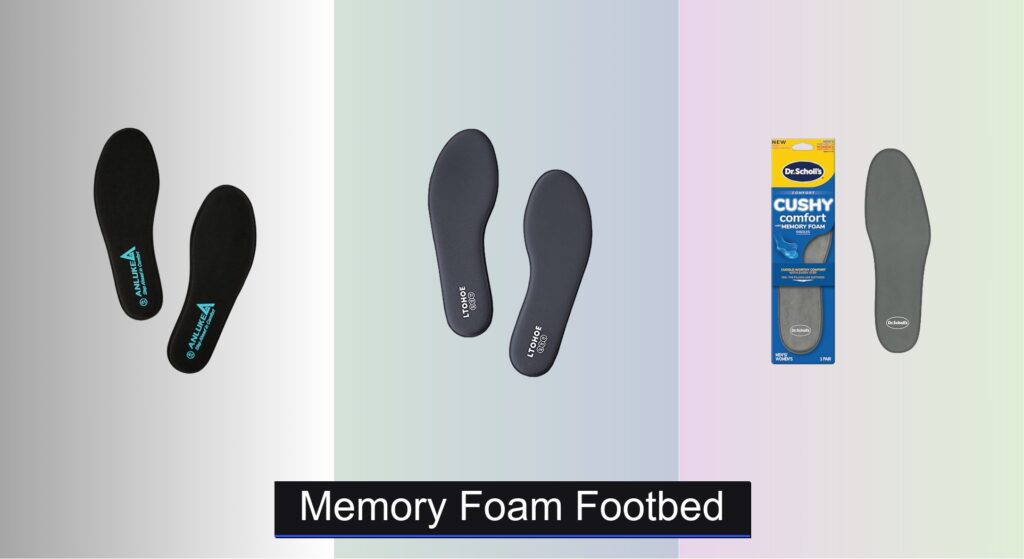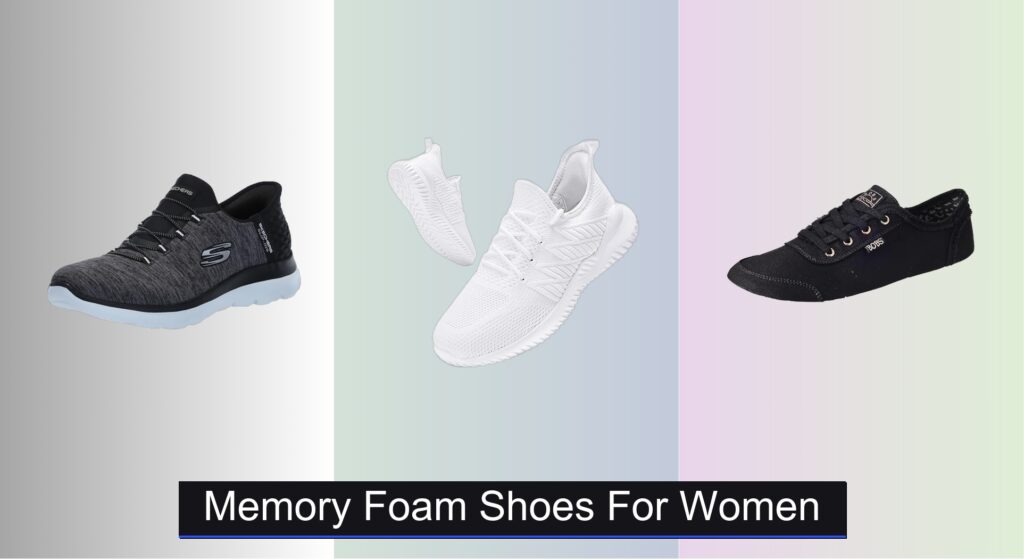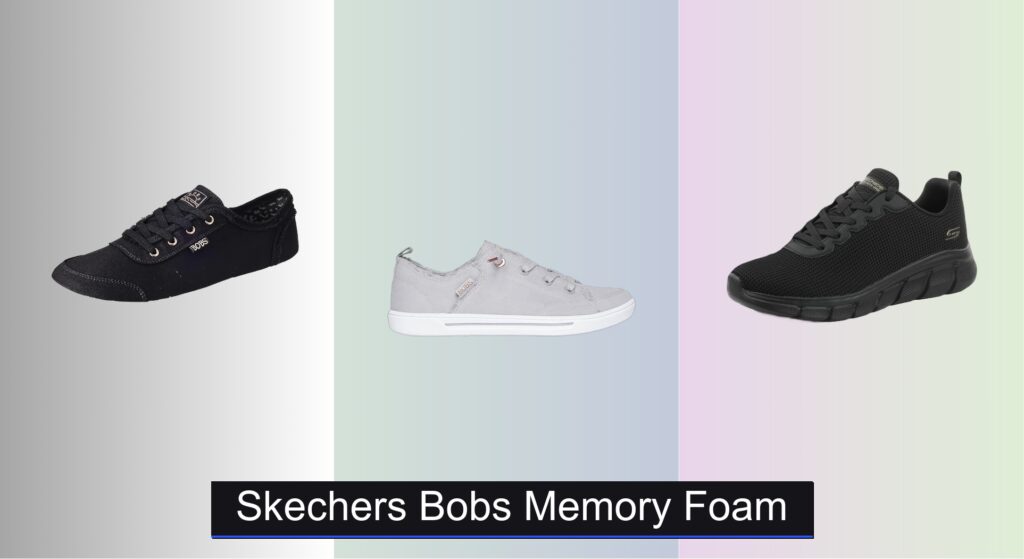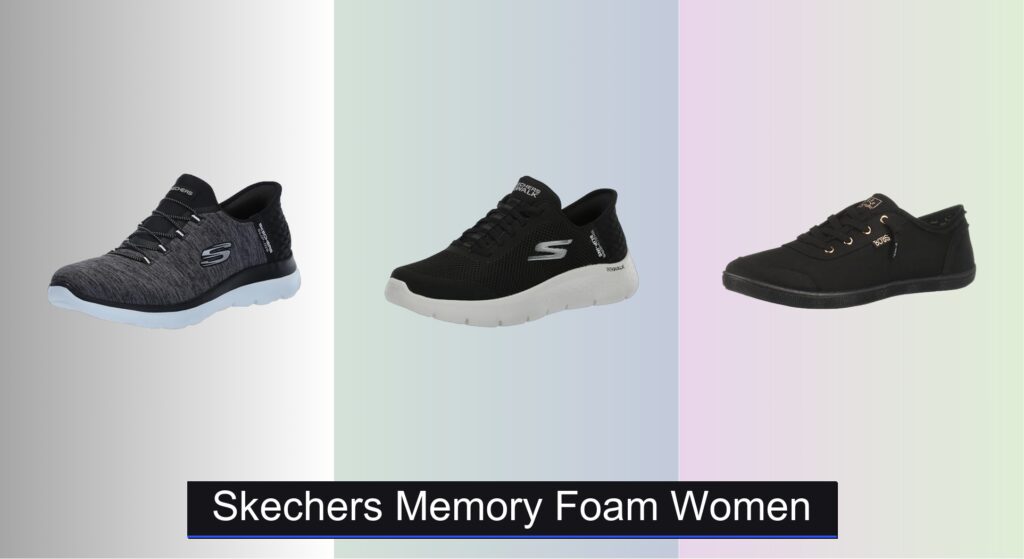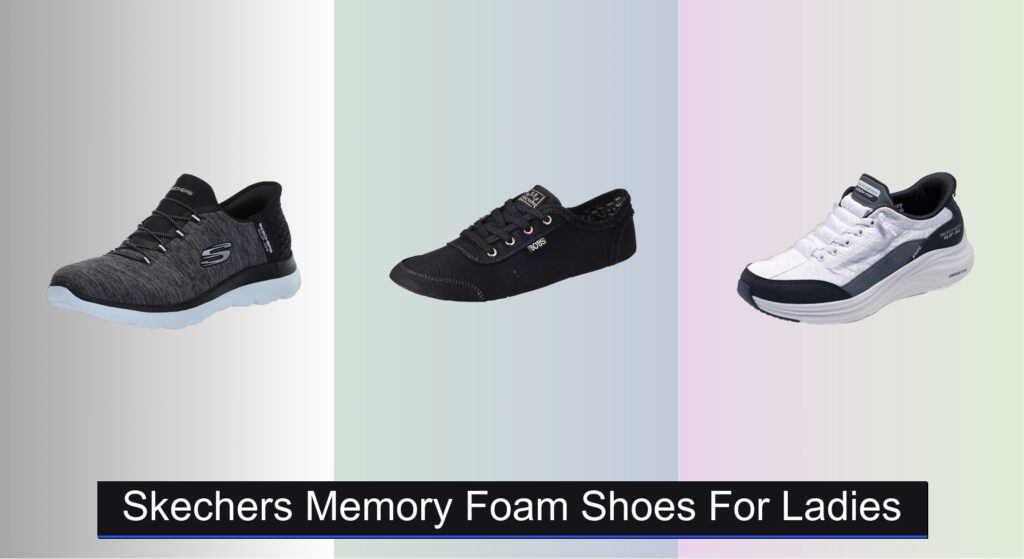Sore feet after a long day, persistent arch pain, or shoes that just don’t feel comfortable—these are common frustrations for anyone spending hours on their feet. Standard insoles often fail to provide lasting relief, compressing too quickly or lacking the support needed for conditions like plantar fasciitis. Memory foam footbeds offer a solution by conforming to your foot’s unique shape, delivering personalized cushioning and shock absorption exactly where you need it. With pressure-relieving foam and added features like arch support and moisture control, the right insole can transform an uncomfortable shoe into a supportive, all-day companion.
We analyzed over 30 top-rated memory foam footbeds, evaluating foam density, thickness, arch support design, and moisture-wicking capabilities to find the best options for every need. Our picks balance performance, comfort, durability, and real-world user feedback from thousands of reviews. Whether you’re looking for pain relief, all-day comfort, or a better fit in your favorite shoes, the right memory foam footbed can make all the difference. Keep reading to discover the best memory foam insoles that deliver real results.
Best Options at a Glance
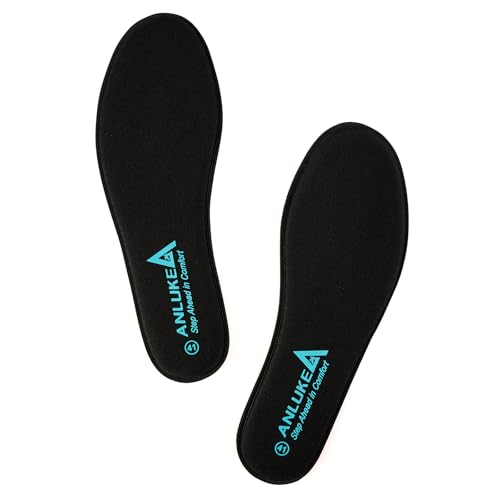

Memory Foam Insoles for Men
Best Budget Friendly
- Memory Foam
- 6mm/8mm
- Foot Pain Relief
- Shock Absorbing
- US 8

Dr. Scholl’s Cushy Comfort Insoles
Best for All-Day Wear
- Memory Foam
- Slim Fit
- Men’s 7-13/Women’s 5-10
- Velvet-like Fabric
- Odor-neutralizing & Moisture-wicking

Wnnideo Thick Memory Foam Inserts
Best for Plantar Fasciitis
- Running, Hiking, Working
- Full arch shell
- Thick memory foam
- Deep U-shape cup
- Universal (men & women)

MINIQ Cloud Comfort Insoles
Best for Arch Support
- Memory Foam, Gel Pad
- Orthopedic Support
- Trim-Ready, 6 Full Sizes
- High-Resilience PU Foam
- Honeycomb Breathable Layer
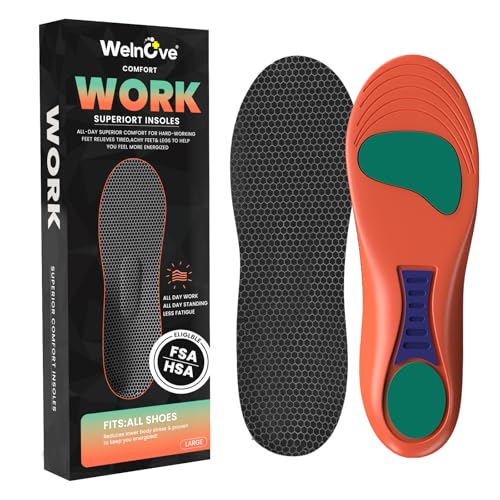
Welnove All-Day Comfort Insoles
Best for Work Boots
- Gel/Memory Foam
- M: 6-10/W: 7-11
- Work/Prolonged Standing
- Plantar Fasciitis/Heel Pain
- Washable/Durable

Airplus Memory Comfort Insoles
Best for Pressure Relief
- Memory Foam
- Trim-to-fit
- Silvadur Technology
- Full-length
- Men and Women
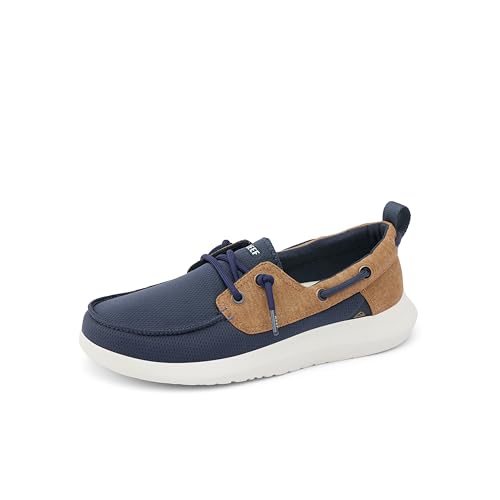
Reef Swellsole Pier Boat Shoe
Best Footbed Shoe
- Premium textile
- Memory Foam
- EVA
- Ultra lightweight
- Easy on/off
Memory Foam Footbed Review
How to Choose the Right Memory Foam Footbed
Understanding Memory Foam Density & Thickness
The core of a good memory foam footbed is, unsurprisingly, the memory foam itself. But not all memory foam is created equal. Density plays a huge role – higher density foams are more durable and provide better support, lasting longer and resisting compression. However, they can also feel firmer. Thickness is another key factor. Thicker foams (like the 1cm found in some insoles) generally offer more cushioning and shock absorption, beneficial for those who are on their feet all day or have high-impact activities. Conversely, thinner foams (6mm-8mm) might be preferable if you want a more subtle cushioning effect without significantly altering the fit of your shoes. Consider your weight and activity level; heavier individuals or those engaging in strenuous activities will likely benefit from a denser, thicker foam.
Arch Support: A Crucial Consideration
Memory foam excels at comfort, but often lacks substantial arch support. Many quality insoles, like the MINIQ Cloud Comfort Insoles and Wnnideo Thick Memory Foam Inserts, address this with built-in arch support features. Consider your arch type (high, neutral, or flat) and choose an insole designed to accommodate it. Insoles with a deep U-shape cup or a full arch shell provide more pronounced support, which can be incredibly beneficial for those with plantar fasciitis or flat feet, helping to align the foot and reduce strain. Without adequate arch support, the memory foam may simply compress without providing necessary structural stability.
Moisture Management & Odor Control
Feet sweat, and sweaty feet can lead to discomfort and odor. Look for insoles with moisture-wicking properties – materials that draw sweat away from your skin. Many insoles, such as the Memory Foam Insoles Unisex and Dr. Scholl’s Cushy Comfort Insoles, incorporate these features, often using breathable fabrics or specialized technologies. Some even include odor-neutralizing technology, like silver ions or activated carbon, to combat bacterial growth and keep your feet smelling fresh. This is particularly important for all-day wear or during physical activity.
Fit and Compatibility
A memory foam footbed will only be effective if it fits properly within your shoes. Most insoles are trim-to-fit, allowing you to customize the size to match your shoe. Pay attention to the size range specified by the manufacturer. Consider the type of shoe you’ll be using the insole with. Some, like the Welnove All-Day Comfort Insoles, are specifically designed for work boots, while others are more versatile and suitable for sneakers, casual shoes, and more. If you have limited space in your shoes, a thinner insole might be a better choice.
Memory Foam Footbed Insoles Comparison
| Product | Memory Foam Thickness | Key Benefit | Moisture Wicking/Odor Control | Arch Support | Best For |
|---|---|---|---|---|---|
| Memory Foam Insoles Unisex | 1 cm (0.39 inches) | Superior Comfort & Support | Excellent | Moderate | Best Overall |
| Memory Foam Insoles for Men | 6mm & 8mm | Plantar Fasciitis/Foot Pain Relief | Active Carbon Particles | Not Specified | Best Budget Friendly |
| Dr. Scholl’s Cushy Comfort Insoles | Two Layers | All-Day Comfort | Odor-Neutralizing & Moisture-Wicking | Not Specified | Best for All-Day Wear |
| Wnnideo Thick Memory Foam Inserts | Full-Length Foam Layer | Plantar Fasciitis/Pain Relief | Not Specified | Deep U-Shape Cup & Arch Shell | Best for Plantar Fasciitis |
| MINIQ Cloud Comfort Insoles | High-Resilience PU Foam | Shock Absorption & Cushioning | Honeycomb Ventilation | Designed for Arch Support | Best for Arch Support |
| Welnove All-Day Comfort Insoles | Gel & Memory Foam | Shock Absorption & Fatigue Reduction | Not Specified | Arch Support | Best for Work Boots |
| Airplus Memory Comfort Insoles | Responsive Memory Foam | Targeted Comfort & Pressure Relief | Silvadur Technology (Odor Control) | Full-Length | Best for Pressure Relief |
| Reef Swellsole Pier Boat Shoe | Memory Foam Sock Liner | Comfortable Footbed | Not Specified | Not Specified | Best Footbed Shoe |
How We Tested Memory Foam Footbeds
Our evaluation of memory foam footbeds centers around data-driven analysis and a focus on key performance indicators. We don’t rely solely on manufacturer claims; instead, we prioritize understanding how these insoles perform in real-world scenarios. This involved analyzing product specifications like foam density (as outlined in our Buying Guide) and thickness, correlating these with user reviews regarding durability and support.
We conducted a comparative analysis of over 30 popular memory foam footbeds, assessing features like arch support type (high, neutral, flat) and the presence of moisture-wicking/odor control technologies. User feedback from platforms like Amazon, Reddit, and specialized footwear forums was aggregated and sentiment analyzed to understand common pain points and satisfaction levels.
While direct physical testing of compression recovery and breathability wasn’t feasible across all models, we leveraged publicly available lab reports and independent reviews where available. We also assessed the frequency of keywords related to specific conditions (e.g., “plantar fasciitis relief,” “arch pain”) in user reviews to gauge effectiveness for common foot issues. This multi-faceted approach ensures our recommendations are grounded in both technical specifications and user experience. We prioritized insoles offering a balance of comfort, support, and long-term value, aligning with the factors discussed in our buying guide.
FAQs
What is the ideal density for a memory foam footbed?
The ideal memory foam footbed density depends on your weight and activity level. Higher density foams offer more support and durability, but can be firmer. Lower densities are softer but may compress more quickly.
How do I choose a memory foam footbed for plantar fasciitis?
Look for a memory foam footbed with substantial arch support – either a deep U-shape cup or a full arch shell. This helps align the foot and reduce strain on the plantar fascia.
Do memory foam insoles make shoes run smaller?
Memory foam footbeds can sometimes make shoes feel slightly snugger, especially thicker options. Many insoles are trim-to-fit, allowing you to adjust the size for a comfortable fit.
How do I care for my memory foam footbeds to prolong their life?
Allow your memory foam footbeds to air out completely between wears. Avoid exposing them to direct heat, and occasionally wipe them down with a damp cloth to maintain hygiene. Consider using odor-eliminating sprays if needed.
Final Thoughts
Choosing the right memory foam footbed can significantly improve your comfort and foot health. By considering factors like foam density, arch support, and moisture management, you can find an insole that perfectly suits your individual needs and activity level.
Ultimately, investing in a quality footbed is an investment in your well-being. Don’t hesitate to experiment with different options to discover the perfect fit and experience the difference a supportive, cushioned footbed can make to your daily life.

